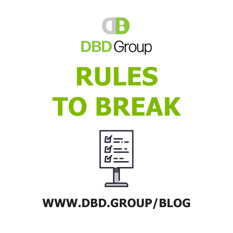The concept of being “data driven” has taken the nonprofit industry by storm. Data’s ability to be objective and serve as a tool to focus energy and attention can be transformative to nonprofit organizations. Using data well means you can be the best steward of your resources and increase your impact in whatever critical area you support.
Therefore, nonprofits often dive in to using data, and once they start it can be hard to stop. More and more “what if we had [insert metric]” scenarios come to mind and before you know it one “basic” dashboard contains over 30 metrics. Success, right?
We need to stop and recognize a core concept when it comes to working with metrics. Metrics in their simplest form are quantitative representations of your work.
Many of the same considerations you have with your work apply to your use of metrics:
- Metrics should connect with your organization’s overall vision, strategies and goals.
- Just as our time and resources needed to be prioritized, so should the metrics we use.
- Metrics should always be tied with the action you take in your work – both to measure that action and indicate how that action should be altered if needed.
If you follow those principles, you’ll find that quality will matter far more than quantity. Dispel the notion that more metrics means better fundraising. In fact, too many metrics can be detrimental to your efforts. Important metrics can get lost in the noise. Analysis paralysis can cause a shift away from using the information metrics provide due to overwhelm and confusion.
Keep dashboards concise and consider the audience. How they should be using and consuming this information in actionable way? That means limiting the # of metrics (10 or less is a good rule of thumb) on each dashboard. Also, making sure there’s a clear narrative of how each metric should be interpreted and ultimately used. Be thoughtful in the cadence and frequency the dashboard is refreshed.
Don’t forget either the effort and energy it takes to create a dashboard and pull individual metrics. While you have to start by first considering what data you need in the context of your fundraising goals and strategies, to make it a reality you’ll have to consider the logistics of how to actually generate them. This underscores and emphasizes the need to focus and prioritize as you consider the ROI on each metric and dashboard in terms of the staff energy to pull them.
The use of metrics and dashboards is a dynamic, ever-evolving process. Just as your work will evolve and shift over time due to a variety of factors, so should your metrics and dashboards. While it’s absolutely important to keep certain core metrics consistent over time for historical comparison, you also need to question the metrics and dashboards you’re using regularly to ensure they are in fact relevant and useful.
Two final words of caution to avoid drowning in too many metrics and dashboards:
- Beware of the drill down. It can seem harmless to take a simple metric and begin slicing and dicing it in different ways. Now you have even more specific, insightful information, right? But the reality is, you’ve just exponentially grown the number of metrics you’re measuring (and calculating). Many times, if you’ve drilled down repeatedly the original use case and justification of why a metric was important may have become irrelevant.
- Don’t circumvent the 10 metrics or less per dashboard rule by creating 40 dashboards. The number of dashboards should also be limited to no more than 10 – which still means you could have up to 100 total metrics. That means plenty of opportunity to use data to the benefit of your organization and mission.
Metrics and dashboards are critical to fundraising in an effective and efficient manner. Limiting them ensures that you are focused on the most important information that will drive and guide your fundraising strategy to the best possible outcome.
What are the metrics that have changed your strategy?
 This Month's Focus
This Month's Focus



